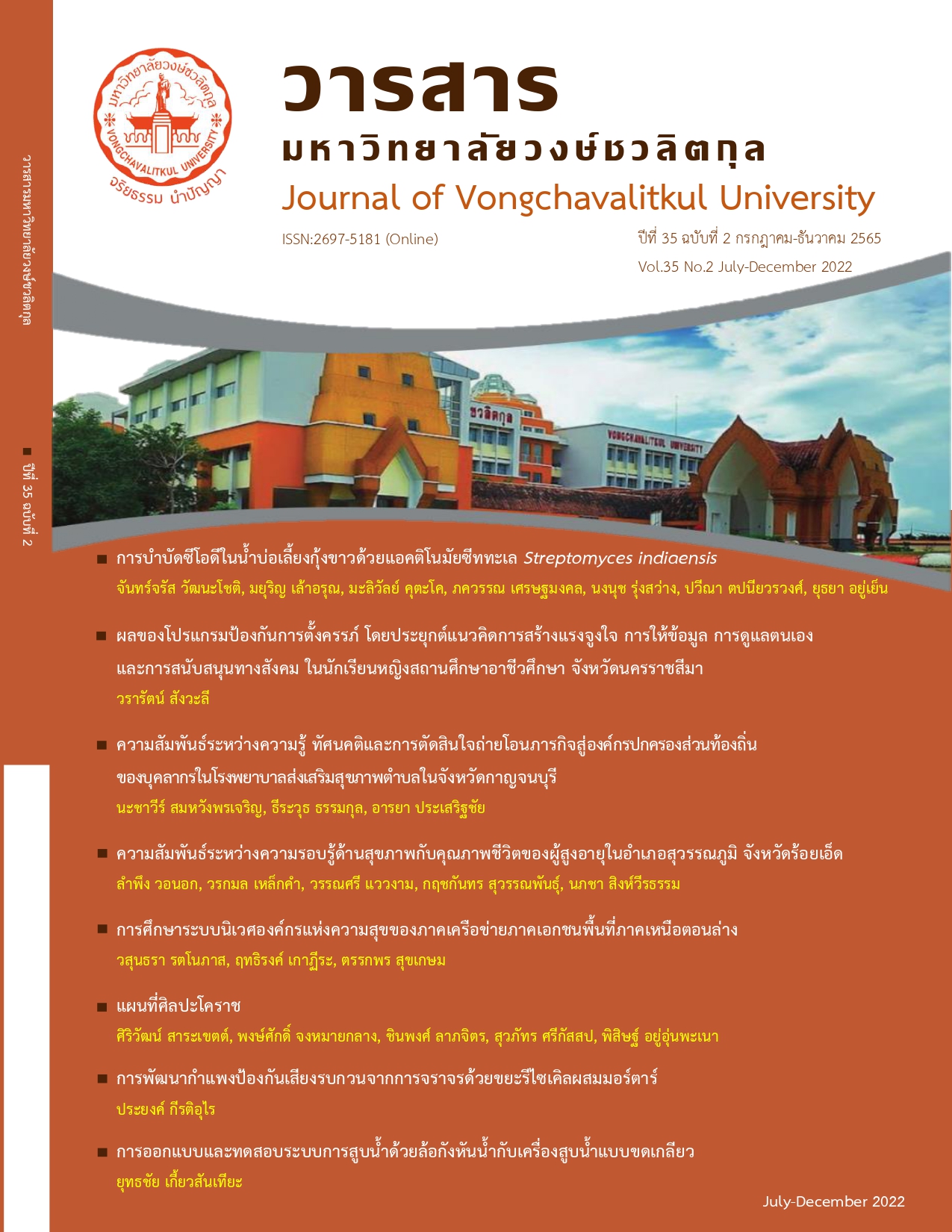The Study of Happy Workplace Ecosystem for Private Organization Network in the Lower Northern Region
Main Article Content
Abstract
Objectives: The objectives of this research were 1) to assess the level of happiness at work in the happy workplace organization, 2) to study the ecosystem in the happy workplace organization, and 3) to study the relationship between the level of happiness and the ecosystem in the happy workplace organization.
Methods: The research population was a network of private health organizations from 4 provinces, namely Kamphaeng Phet Province, Nakhon Sawan Province, Uthai Thani Province and Tak Province (Mae Sot) with a total of 37 organizations with 5,920 personnel. The samples groups were selected purposive sampling according to the inclusion and exclusion criteria. The researcher conducted a cluster sampling based on the characteristics of the sample group an organizational structure with personnel departments, a well-being plan in the organization, and training of organizational health workers, resulting in a sample group of 10 organizations with a population of 1,018 people and obtained 287 samples from Krejcie and Morgan's calculations. The tools used for data collection were questionnaires. The statistics used for data analysis were frequency, percentage and Pearson's correlation coefficient test.
Results: The results of the research showed that 1) the level of happiness at work of organizations affiliated with the health organization network in 9 aspects were at a high level ( = 4.13, S.D. = 0.39). 2) the overview of the ecosystem in the happy organization was at a high level ( = 4.15, S.D. = 0.51) and 3) the relationship between happiness levels and ecosystems in happy workplace organizations found a statistically significant correlation (r = .722) at p-value < 0.05.
Article Details

This work is licensed under a Creative Commons Attribution-NonCommercial-NoDerivatives 4.0 International License.
References
กอปรลาภ อภัยภักดิ์. (2563). บรรยากาศองค์กรแห่งความสุขคนเบิกบานงานสำเร็จ. วารสาร มนุษยศาสตร์ปริทรรศน์ มหาวิทยาลัยมหาจุฬาลงกรณราชวิทยาลัย, 6(1), 315 – 330.
โครงการศูนย์บริการวิชาการองค์กรสุขภาวะ ภาคเหนือตอนล่าง โดยมหาวิทยาลัยราชภัฏกำแพงเพชร. (2562). แบบสอบถามประเมินความสุขส่วนบุคคล Self Assessment Happy Workplace. มหาวิทยาลัยราชภัฏ กำแพงเพชร.
ชาญวิทย์ วสันต์ธนารัตน์. (2551). องค์กรแห่งความสุขด้วยความสุข 8 ประการ. (31 สิงหาคม 2564). สืบค้นจาก: https://www.doctor.or.th/article/ detail/5572
ชุติมา สีบำรุงสาสน์. (2562). สมาคมการจัดการงานบุคคลแห่งประเทศไทย. (31 สิงหาคม 2564). สืบค้นจาก: http://www.pmat.or.th/
ถิตรัตน์ พิมพาภรณ์ วิโรจน์ เจษฎาลักษณ์ และจันทนา แสนสุข. (2562). การให้ความหมายและรูปแบบการดำเนินกลยุทธ์การจัดการความสุขในการทำงานต่อพนักงานของธุรกิจโรงแรมในประเทศไทย. วารสารอิเล็กทรอนิกส์การเรียนรู้ทางไกลเชิงนวัตกรรม. 9(2), 41 – 50.
ถิตรัตน์ พิมพาภรณ์ และธีระวัฒน์ จันทึก. (2559). ความสุขในการทำงาน : ความท้าทายของการจัดการทรัพยากรมนุษย์ในอุตสาหกรรมบริการ. วารสารมนุษยสังคมปริทัศน์. คณะมนุษยศาสตร์และสังคมศาสตร์ มหาวิทยาลัยราชภัฏเพชรบุรี, 18(2), 113 – 125.
ธยา ภิรมย์ และ พันธ์ยศ วรเชฐวราวัตร์. (2555). การศึกษาความเมื่อยล้าจากการนั่งทำงานของพนักงานเย็บในอุตสาหกรรมเครื่องนุ่งห่ม. การประชุมวิชาการข่ายงานวิศวกรรมอุตสาหกรรม ประจำปี พ.ศ. 2555. วันที่ 17-19 ตุลาคม 2555 ณ สาขาวิศวกรรมอุตสาหการ คณะวิศวกรรมศาสตร์ มหาวิทยาลัยเทคโนโลยีราชมงคลศรีวิชัย: อำเภอชะอำ จังหวัดเพชรบุรี.
มาสริน ศุกลปักษ์ และคณะ. (2554). ความสัมพันธ์ระหว่างลักษณะงานและบรรยากาศองค์กร ต่อคุณภาพชีวิตการทำงานของพยาบาลวิชาชีพ โรงพยาบาลพระนั่งเกล้า. วารสารวิจัยทางวิทยาศาสตร์สุขภาพ, 5(1) 32-39
ยุพาวรรณ ทองตะนุนาม และคณะ. (2558). ปัจจัยพัฒนาองค์กรแห่งความสุข (ภาครัฐ): การทบทวนวรรณกรรมอย่างเป็นระบบ. วารสารวิจัยทางวิทยาศาสตร์
สุขภาพ, 9(1), 52.
สมยศ นาวีการ. (2544). การบริหารเชิงกลยุทธ์. กรุงเทพฯ: สำนักงานพิมพ์บรรณกิจ.
สุชาดา นิ้มวัฒนากุล และชดช้อย วัฒนะ. (2561). ความสุขของนักศึกษาและบุคลากร วิทยาลัยพยาบาลพระปกเกล้า จันทบุรี และความคิดเห็นในการสร้างองค์กรแห่งความสุข. วารสารรายงานการวิจัย, 29(1), 141 – 147.
สุวรรณา เหลืองไพบูลย์ผล. (2549). การรับรู้สภาพแวดล้อมในการทำงานและความผูกพันต่อองค์การของพนักงานระดับปฏิบัติการในอุตสาหกรรมรถยนต์. มหาวิทยาลัยเทคโนโลยีพระจอมเกล้าเจ้าคุณทหารลาดกระบัง.
Koufman, H. F. (1949). Participation in Organized Activities in Selected Kentucky Localities. Lexington, KY: Kentucky. Agricultural Experiment Station, University of Kentucky.
Krejcie, R. V., & Morgan, D. W. (1970). "Determining Sample Size for Research Activities”. Educational and Psychological Measurement. 30(3): 607-610.
Moos, R. H. (1986). The human context environmental determinants of behavior. New York: John Wiley and Sons.


